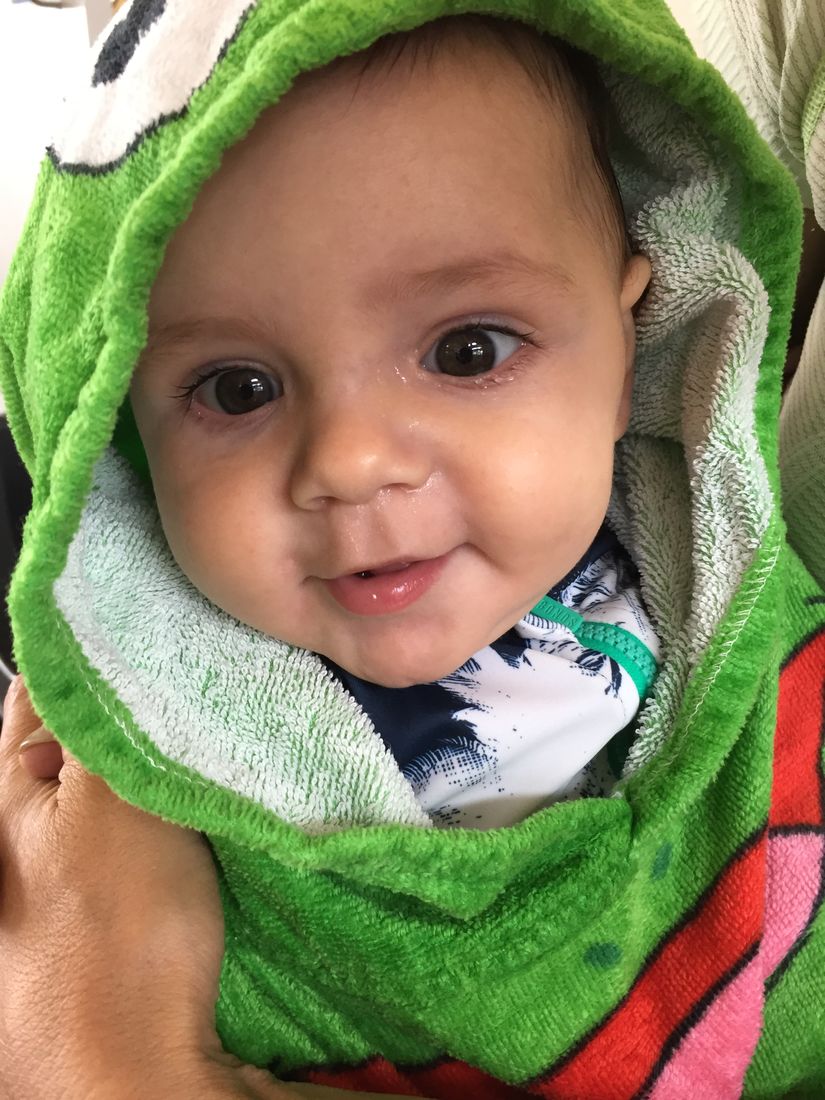Swimming is a healthy form of exercise at any age, as it builds muscle strength and endurance and is beneficial for improving metabolism and the cardiovascular system. For young children, water provides a form of play and builds confidence with safety around water.
There is no rule to suggest newborns can’t go into the ocean from birth (Smith, 2019). However, infants under 6 months of age are often unable to regulate their body temperatures well enough to swim in cool ocean water (Smith, 2019). So quite simply… they won’t enjoy it! Babies are most comfortable when the water temperature around 30 degrees. Observe your child and if they appear cold, display ‘blue lips’ or start shivering take them out of the water and warm them up. For newborns, it may only take a few minutes before they become too cold, whereas children closer to 12 months of age may enjoy the water up to 30 minutes at a time. You don’t have to wait until your baby is immunised to take them swimming either. When old enough always use sunscreen on your infant when they are outdoors. Also put a hat on them and sit in the shade when not in the water.
If you would like your child to be exposed to water but you don't think they are ready for the ocean yet, try taking them swimming in a pool. The chlorine in pools kills much of the bacteria (Smith, 2019). Remember to always supervise young children around water. There is also no rule to suggest children can’t go into public swimming pools from birth. Some medical experts suggest waiting until your child is at least 2 months prior to commencing classes as a way to strengthen immunity, as public pools carry germs (AAP, 2013). Baby swimming lessons usually start at around 2-4 months. Baby swim classes are designed to get your baby used to the water, help them learn swimming strokes, and to teach them safety and how to survive in the water. It’s important to know that these skills learnt never substitute supervision for young children. These lessons provide parents with physical activity and allows for socialisation with other families with young children. Keep in mind, that mothers should avoid swimming until at least 6 weeks after the birth, or when they have stopped bleeding to allow for physical recovery. Check your local pools for when lessons commence. You can find swimming classes in your area by visiting the Austswim website. https://austswim.com.au/Swimcentres/FindaSwimCentre.aspx
If you’d prefer to hold off until your child is older to enjoy the ocean or swimming pools, water play can be enjoyed in the bath in your own home. Let them enjoy the water on their skin. While supporting their bodies, allow them to float and explore their limbs while they splash around. Bathing is an excellent settling technique and particularly reminds newborns of their surroundings in the womb (amniotic fluid). It also provides an excellent association for sleep, in particular at nighttime before bed. This initiates a ‘wind-down’ period for your child. This can be incorporated into night time routine within the first week of life.
Enjoy!
Cara x
References
American Academy of Pediatrics (2013). Summer Safety Tips – Sun and Water Safety. Viewed 3 April, 2019. Retrieved from http://www.healthychildren.org/English/news/Pages/Summer-Safety-Tips-Sun-and-Water-Safety.aspx
Victorian Government Department of Health and Human Services (2008). Pool Operators’ handbook. Melbourne: DHHS. Viewed 13 November 2018. Retrieved from https://www2.health.vic.gov.au/about/publications/researchandreports/Pool-operators-handbook.
Smith, N (2019). Is Salt Water Ok for Babies to Swim in? LiveStrong.com. Viewed 3 April, 2019. Retrieved from https://www.livestrong.com/article/498085-is-salt-water-ok-for-babies-to-swim-in/

